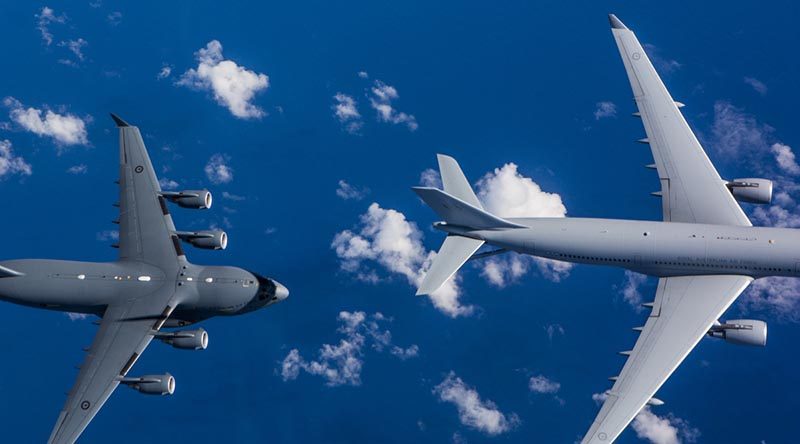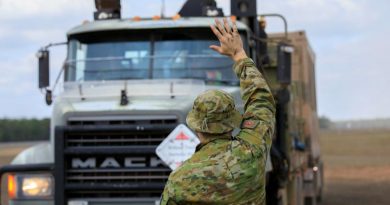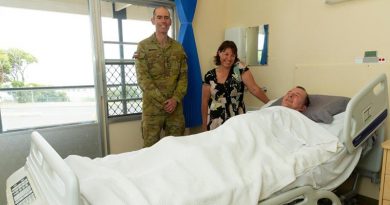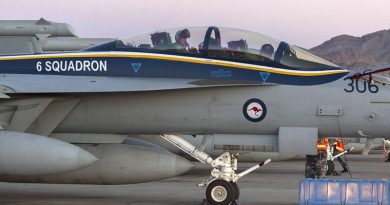BUDGET 2016-17 – DEFENCE and VET AFFAIRS OVERVIEW
Share the post "BUDGET 2016-17 – DEFENCE and VET AFFAIRS OVERVIEW"

The 2016 Defence Budget delivers on the Turnbull Government’s commitment to ensuring Australia’s long-term security and economic prosperity. It provides the funding needed to deliver the capability plans set out in the 2016 Defence White Paper, including plans for the Australian naval shipbuilding industry, and to support our ongoing commitments to Defence Operations.
This Budget builds on the Coalition’s promise to provide Defence with a stable and sustainable funding growth path. It supports the 2016 Defence White Paper capability plans by growing the Defence budget to two per cent of GDP by 2020-21, three years earlier than the Government’s 2013 election commitment. This will result in additional funding of $29.9 billion over the next decade in contrast to the Labor Party’s record of cuts that stripped more than $18 billion from the Defence budget.
The Government will provide Defence with $32.3 billion in 2016-17 and $142.9 billion over the Forward Estimates.
The Government’s naval shipbuilding strategy will invest around $90 billion in our naval capability and shipbuilding industry, creating more than 3,600 direct jobs and thousands more through the supply chain.
The 2016 Defence White Paper, Integrated Investment Program, and Defence Industry Policy Statement set out comprehensive and responsible long-term plans to ensureAustralia’s national security and provide certainty for Australian defence industry.
.
NAVAL SHIPBUILDING STRATEGY
The Turnbull Government’s naval shipbuilding strategy will ensure Australia retains a sovereign capability to build and sustain its naval vessels, securing thousands of jobs for decades to come.
A continuous local build of naval ships will also deliver significant spill-over benefits, driving investment, jobs, growth and innovation across the wider economy, and create opportunities for small-to-mediums sized businesses across the nation.
Australia’s 12 Future Submarines will be constructed at the Adelaide shipyard. The $50 billion Future Submarine project is the largest and most complex defence acquisitionAustralia has ever undertaken. It will be a vital part of our Defence capability well into the middle of this century.
The Government has also announced First Pass Approval for both the $3 billion Offshore Patrol Vessel and the $35 billion Future Frigates projects. The Government further announced that the first Offshore Patrol Vessels will begin construction in Adelaide, South Australia, in 2018 before moving to Henderson, Western Australia, when the Future Frigates begin construction in Adelaide in 2020.
Subject to final negotiations, Austal has been selected as the preferred tenderer to build up to 21 steel-hulled replacement Pacific Patrol Boats in Henderson, beginning in 2017.
These announcements provide for two shipyards to implement the Government’s commitment to a continuous build of naval surface ships in Australia, with submarines and major warships to be built in Adelaide, South Australia and other vessels in Henderson, Western Australia, while also securing the vital skills and jobs that were at risk after six years of indecision by Labor.
The Turnbull Government is committed to maximising the opportunities for our defence industry to participate in these shipbuilding programs.
.
SUPPORTING DEFENCE INDUSTRY
The Turnbull Government recognises that Australia’s defence industry’s capacity for innovation will be vital to maintain a world-class Defence Force.
The Government’s plans in the White Paper and Defence Industry Policy Statement will build the skills and competitiveness of our defence sector so that it can provide the ADF with a leading edge capability and ensure that more of our investment, and the jobs that come with it, occur within Australia.
Creating new high-tech, higher paying jobs in Defence industry is central to the Government’s strategy to transition to a strong 21st century economy.
The Government is investing around $1.6 billion over the decade to 2025-26 in Defence Industry Policy Statement initiatives including:
· The Centre for Defence Industry Capability, which will be headquartered in Adelaide and will underpin the new partnership between Defence and industry. Funded at around $230 million over the decade, the Centre will be a close collaboration between the private sector, Defence and AusIndustry (within the Department of Industry, Innovation and Science).
· The Next Generation Technologies Fund, which will receive around $730 million over the decade in new funding for research into emerging technologies that have the potential to deliver game-changing capabilities critical to our defence and national security.
· A ‘virtual’ Defence Innovation Hub funded at around $640 million across the decade, which will bring together Defence’s complex and fragmented innovation programs and enable collaboration throughout the Defence capability life cycle.
.
DEFENCE CAPABILITY INVESTMENT
Over the past 12 months the Government has committed around $13.1 billion to new capabilities to strengthen our Defence Force.
These have included:
· 1100 locally built Hawkei protected vehicles and more than 1,000 trailers to strengthen our land combat capability. The Hawkei will improve protection for soldiers and enable them to operate in high‑risk areas.
· A new Australian Defence Force Pilot Training System, which includes the acquisition of 49 Pilatus PC-21 aircraft and seven Flight Simulators.
· An upgrade to the next generation of military communications for the Australian Defence Force to support the deployment of operational headquarters and enable access to Defence’s strategic networks.
· Two additional Airbus KC-30A Multi-Role Tanker Transport aircraft to bolster the Royal Australian Air Force’s existing fleet of five.
· Four additional Boeing P-8A Poseidon maritime surveillance and response aircraft.
· New Austeyr EF88 rifles (the enhanced F88) and advanced ancillary devices to improve effectiveness for soldiers involved in close combat and their immediate support elements.
The fully costed, 10-year Integrated Investment Program released alongside the Defence White Paper has detailed Defence’s future capability requirements to ensure the men and women of the ADF have the resources they need to keep Australia secure.
.
DEFENCE OPERATIONS
As part of our ongoing commitment to security and stability around the globe, the Government has agreed to additional major Operations funding of $615.8 million in the 2016‑17 Budget and $686.0 million over the Forward Estimates.
Australia currently has around 2,500 Defence personnel deployed around the world including on operations across the Middle East and Afghanistan, and as part of the Government’s commitment to securing our borders. The Turnbull Government remains absolutely committed to these personnel and the important contributions they are making.
Recent attacks, including those in Paris, Belgium, Pakistan, Jakarta, underscore the importance of Australia’s significant contribution to the US-led counter-Daesh coalition. For this reason, Australia has around 800 personnel deployed in Iraq and Syria as part of Operation OKRA.
The Government has agreed to additional funding of $335.4 million in the 2016‑17 Budget and $363.0 million over the Forward Estimates for Operation OKRA. Including previously approved funding this takes the total funding to $353.0 million in 2016-17.
DAN TEHAN
MINISTER FOR VETERANS’ AFFAIRS
MINISTER ASSISTING THE PRIME MINISTER FOR THE CENTENARY OF ANZAC
MINISTER FOR DEFENCE MATERIEL
Delivering on mental health and enhanced support for veterans
In the 2016–17 Budget, the Turnbull Government’s focus is on ensuring the mental health needs of our veterans are met through early intervention strategies, as well as improving our capability to provide better customer service and support for veterans and their families, now and into the future.
The 2016–17 Budget provides $37.9 million to extend the non-liability health care initiative, which expands eligibility for treatment of mental health conditions to all current and former permanent members of the Australian Defence Force (ADF), irrespective of how long or when they served, or the type of service.
The Minister for Veterans’ Affairs, Dan Tehan, today said eligibility for early access to mental health treatment had been streamlined for permanent ADF members.
“This means that anyone who has ever served in the ADF permanent forces will be eligible for treatment for conditions such as post-traumatic stress disorder, anxiety, depression, and alcohol and substance abuse,” Mr Tehan said.
“These eligible veterans will receive a Department of Veterans’ Affairs (DVA) White Health Card, which provides additional benefits including access to counselling from the Veterans and Veterans Families Counselling Service.
“We recognise that current and former serving personnel may develop these conditions and that the earlier an individual seeks treatment, the more effective the likely health and other outcomes. Funding for mental health treatment is demand-driven and not capped—if an eligible person requires treatment, it is funded.
“In addition, we have extended funding for veteran suicide awareness and prevention workshops. The Government will provide $1.0 million to continue training members of the broader ex-service community to recognise and assist those at risk of suicide, and to pilot a new suicide prevention initiative.
The Turnbull Government will not proceed with the 2014–15 Budget measure to end the three month backdating of veterans’ disability claims, reinstating funding of $37.8 million over the forward estimates.
“I have been working closely with the ex-service organisations and this 2014–15 Budget measure raised considerable concern in the veteran community. I am pleased that this measure will not proceed, allowing for veterans to receive a disability pension that is backdated three months from the receipt date of the claim to DVA,” Mr Tehan said.
“Since becoming Minister for Veterans’ Affairs another major issue raised with me by ex-service organisations is the delays processing claims because of the outdated DVA ICT systems.
“This Government continues to listen to the needs of our veteran community, particularly the need to decrease claims processing times and improve support systems.
“This is why we are investing a total of $24.8 million to design a transformation program that aims to deliver better customer service for veterans, underpinned by better processes and technology.”
A major overhaul of DVA’s ICT systems would underpin significant improvements to the way the department conducts its business and, consequently, provides services to veterans and their families.
“In addition, $23.9 million has been allocated in the Budget to enable DVA to maintain its critical compensation processing systems while developing the detailed transformation program,” Mr Tehan said.
“In developing the plan, the aim will be to revolutionise the way DVA interacts with, and delivers support and services to veterans and their families for decades to come.”
Mr Tehan also acknowledged the service and sacrifice of current and former serving ADF members and veterans, who have defended our values and freedoms.
“It is important that we acknowledge our veterans in a respectful way through commemorative services, maintenance of war graves and memorials, and cultural and educational activities,” Mr Tehan said.
“This is why the Turnbull Government’s 2016–17 Budget is providing $7.5 million to refurbish and rebuild 3,800 war graves and memorials that have deteriorated in Australia and Papua New Guinea, and to undertake essential safety and maintenance work at the Hellfire Pass Memorial Museum in Thailand to accommodate the significant number of people who visit this commemorative site.”
Additional Budget measures for veterans include:
-
$5.5 million to ensure that eligible veterans receive incapacity payments through to ‘pension age’ as it progressively advances to 67 years in July 2023
-
$2.7 million for a new case management system for the Veterans’ Review Board (VRB) that will streamline processes and reduce backlogs by allowing veterans to lodge appeals, manage them, and monitor their real-time progress electronically
-
the national rollout of a Veterans’ Review Board alternative dispute resolution model that has been successfully trialled in NSW/ACT, that saw 57 per cent of applications finalised without the need for a full hearing and, being finalised within two months rather than the usual 12 months
-
$2.1 million for the Kookaburra Kids Foundation to support children whose parent/s are a serving ADF member or veteran affected by mental illness, including PTSD
-
$10 million to support the Spirit of ANZAC Centenary Experience travelling exhibition of Australia’s involvement in the First World War and subsequent Century of Service of Australia’s Armed forces in wars, conflicts and peacekeeping operations.
.
.
.
.
.
.

.
.

.
Share the post "BUDGET 2016-17 – DEFENCE and VET AFFAIRS OVERVIEW"







Hi guys great read!. “Budget”. There was a big rumour that they would hack into our Service Pension for TPI. Brian